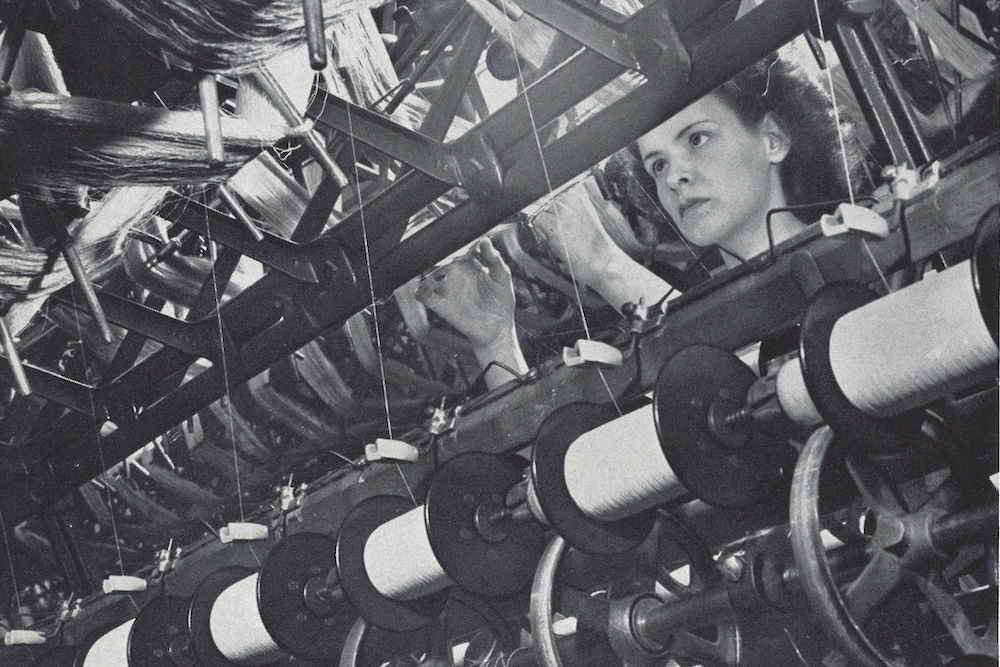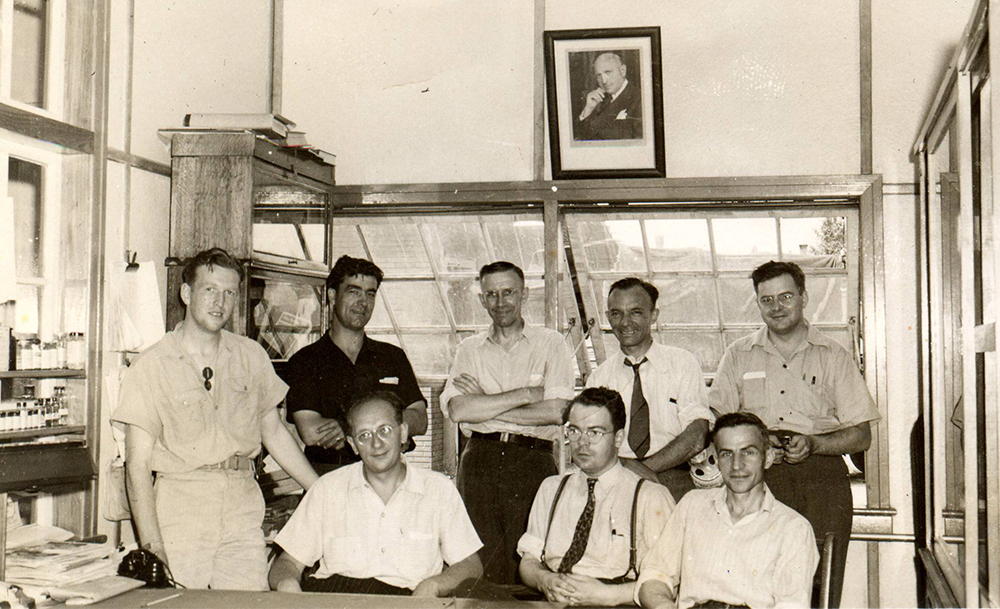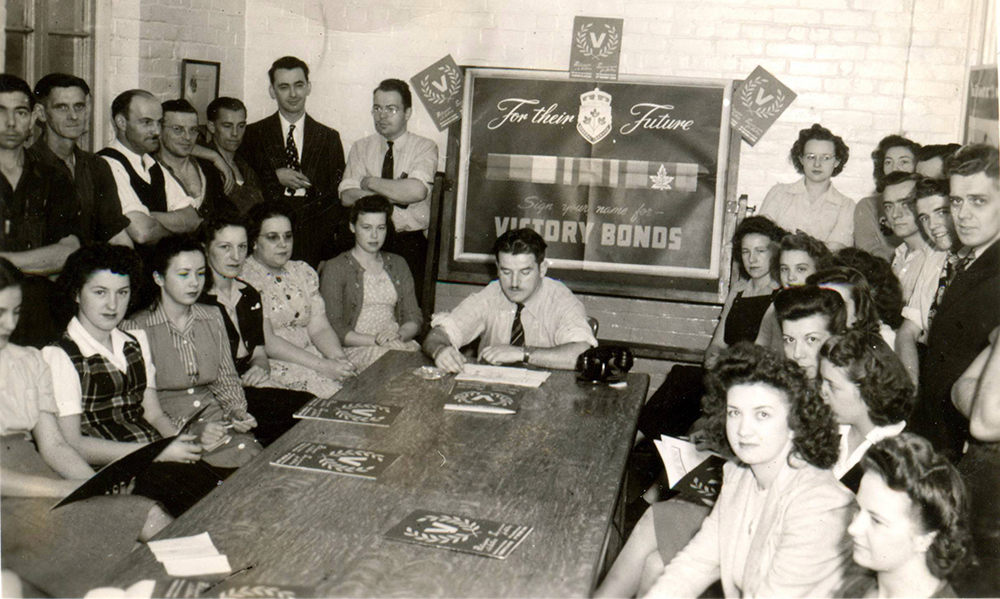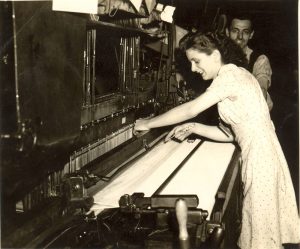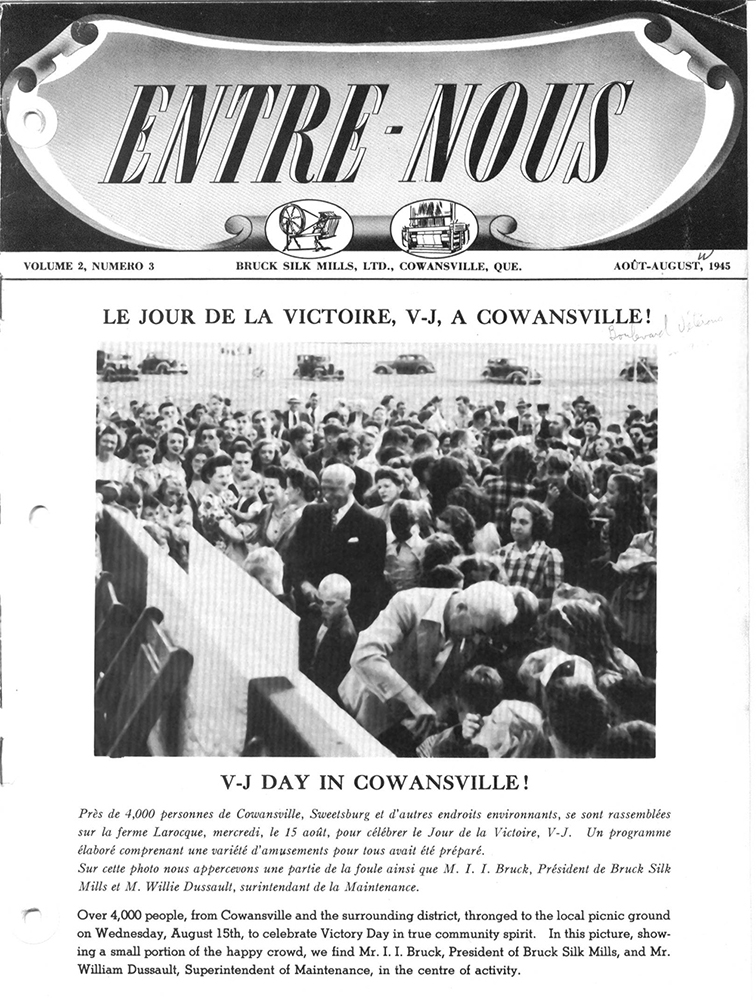The 1930s and 1940s: general strike, war contracts, women in the workforce
General strike and labour union tensions
The economic crisis that follows the stock market crash of 1929 has a major effect on the Canadian and American textile industries. With the rapid growth of Bruck Silk Mills comes inevitable labour conflicts. Although the silk industry is relatively unaffected, Bruck workers have to take a 25% cut in their wages, which are already lower than in the cotton industry. Women workers, who are paid only half as much as men, suffer this sting more deeply. A general strike breaks out on February 28, 1931. Even though it only lasts 11 days, it is more than enough to ignite passions. Inspired by American unionism, the strikers elect a strike committee and set up picket lines at the factory gates and the train station.
Communist organizers in Cowansville
The conflict quickly resonates with the Communist Party of Canada, which sees it as an opportunity to win votes. Five party delegates come to assist the strikers in setting up picket lines. Among them is the influential Fred Rose, who in 1943, will become the first and only Communist elected member of Parliament in Canada. Yet, after the Bruck management decrees a lockout, the Communists’ grip reaches its limits. The hostility of the Catholic unions and the influence of the parish priest, who condemns the strike, finally convince the strikers to accept the wage cut and return to work, obtaining only a 10% bonus on night work. A second strike breaks out on December 21, 1946 and lasts 42 hours, following the intervention of an arbitration committee that negotiates a wage agreement between management and workers.
Women in the workforce and the war effort
The impact of the war contributes to the surge of women in the labour market. Adding an evening shift for women allows for the implementation of a double female team in the thread department. This workforce is generally made up of young single ladies and many leave their jobs after marriage or pregnancy. Bruck now works at full capacity and contributes to the war effort by producing resistant fabrics for various equipment including parachutes, which are first made of silk and later of rayon.


